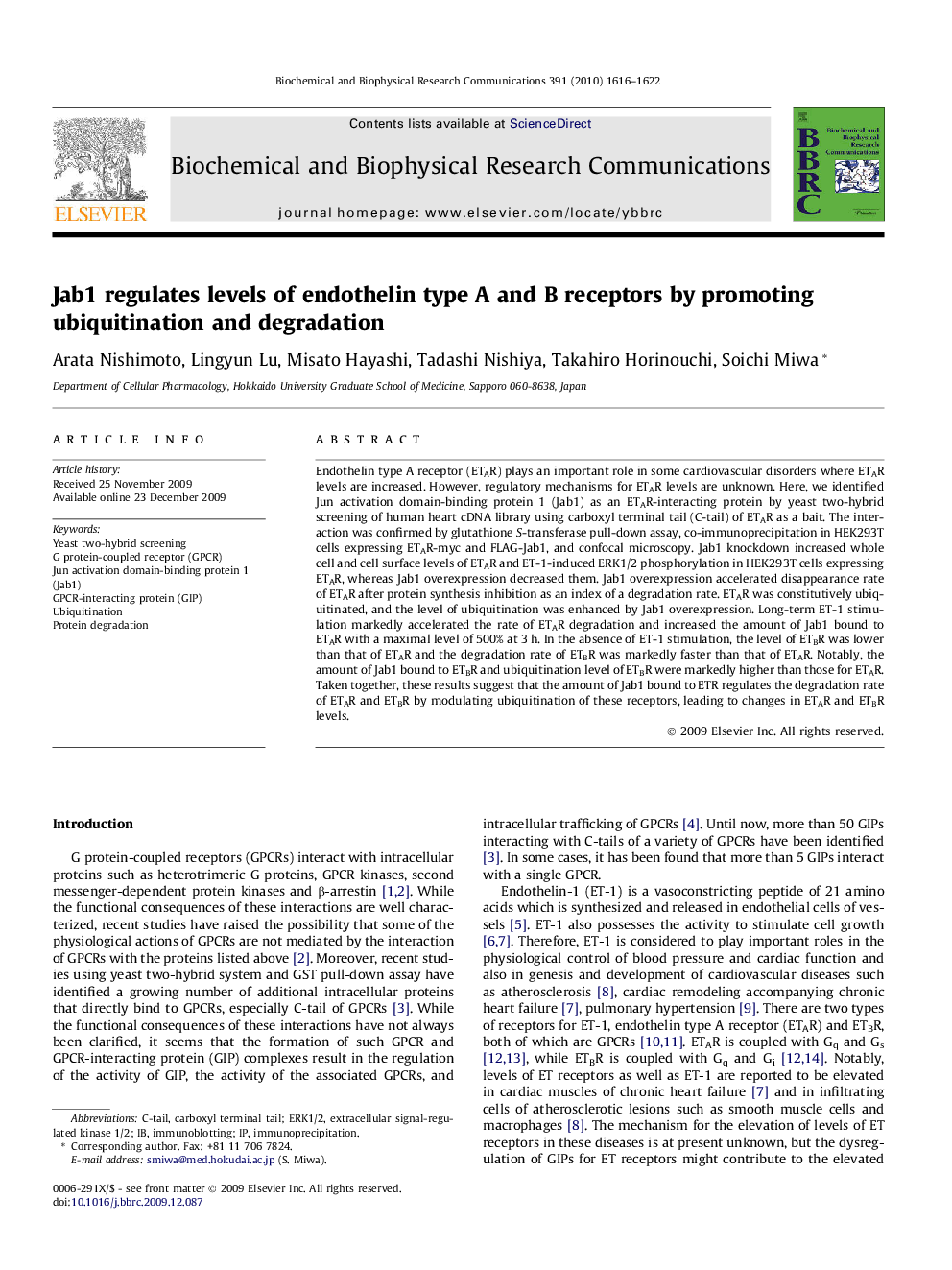| Article ID | Journal | Published Year | Pages | File Type |
|---|---|---|---|---|
| 1932270 | Biochemical and Biophysical Research Communications | 2010 | 7 Pages |
Endothelin type A receptor (ETAR) plays an important role in some cardiovascular disorders where ETAR levels are increased. However, regulatory mechanisms for ETAR levels are unknown. Here, we identified Jun activation domain-binding protein 1 (Jab1) as an ETAR-interacting protein by yeast two-hybrid screening of human heart cDNA library using carboxyl terminal tail (C-tail) of ETAR as a bait. The interaction was confirmed by glutathione S-transferase pull-down assay, co-immunoprecipitation in HEK293T cells expressing ETAR-myc and FLAG-Jab1, and confocal microscopy. Jab1 knockdown increased whole cell and cell surface levels of ETAR and ET-1-induced ERK1/2 phosphorylation in HEK293T cells expressing ETAR, whereas Jab1 overexpression decreased them. Jab1 overexpression accelerated disappearance rate of ETAR after protein synthesis inhibition as an index of a degradation rate. ETAR was constitutively ubiquitinated, and the level of ubiquitination was enhanced by Jab1 overexpression. Long-term ET-1 stimulation markedly accelerated the rate of ETAR degradation and increased the amount of Jab1 bound to ETAR with a maximal level of 500% at 3 h. In the absence of ET-1 stimulation, the level of ETBR was lower than that of ETAR and the degradation rate of ETBR was markedly faster than that of ETAR. Notably, the amount of Jab1 bound to ETBR and ubiquitination level of ETBR were markedly higher than those for ETAR. Taken together, these results suggest that the amount of Jab1 bound to ETR regulates the degradation rate of ETAR and ETBR by modulating ubiquitination of these receptors, leading to changes in ETAR and ETBR levels.
